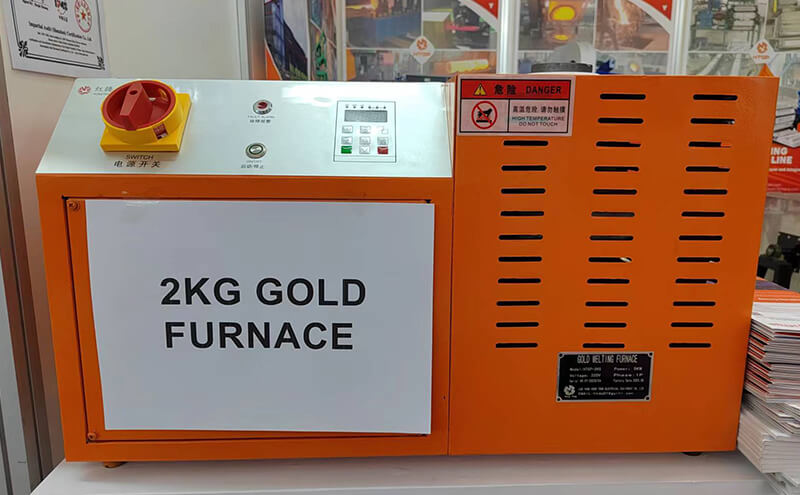2KG GOLD FURNACE
Portable Gold Smelter Machine: My Honest Experience & Buyer’s Guide
Let’s be real—if you’ve ever tried to melt gold in a makeshift setup, you already know how frustrating it can be. I’ve been there too. The endless trial-and-error with DIY furnaces, the wasted time waiting for uneven heating, and the disappointment of clumpy, half-melted results—it’s enough to make anyone give up. That’s why when I finally switched to a portable gold smelter machine, the difference was night and day. And I want to save you that same headache by sharing what I learned.
This isn’t going to be some dry technical brochure. Think of it as a friend’s honest breakdown of what works, what doesn’t, and how you can avoid the pitfalls I went through.

Why Portable Gold Smelter Machines Are a Game-Changer
Gold melting used to feel like a hassle: big bulky furnaces, high fuel costs, and setups that only made sense for industrial plants. Portable smelters flip that script. They’re compact, energy-efficient, and easy to carry—whether you’re a jeweler, small refinery, or hobbyist.
And here’s the kicker: a good portable gold smelter machine doesn’t just melt faster, it gives you consistent, controllable results. That means no more overheating, no more wasted material, and no more second-guessing if your ingot will come out right.
My First-Hand Test: What It’s Actually Like Using One
When I got my first portable gold smelter, here’s the flow I went through:
- Setup – Took me less than 10 minutes. Plugged it in, added the graphite crucible, and I was good to go.
- Operation – The digital control panel was surprisingly straightforward. No fumbling through confusing menus—just set the temp and let it climb.
- Performance – I managed to melt 200g of gold scrap in under 10 minutes. Compared to my old torch method (which could take forever and still be inconsistent), this was a huge time saver.
- Result – Smooth, clean pour with almost zero material loss. Honestly, I didn’t expect it to be that efficient.
Of course, nothing is perfect. The fan was a bit louder than I thought it would be, and the smaller capacity means if you’re running large-scale production, you’ll need multiple units or a bigger industrial furnace. But for small to mid-size jobs? Absolutely worth it.
Quick Comparison: Portable Smelters vs. Alternatives
| Feature | Portable Gold Smelter | Gas Torch | Large Industrial Furnace |
|---|---|---|---|
| Setup Time | 5–10 mins | Instant | Hours |
| Portability | High | Medium | None |
| Control & Accuracy | Excellent (digital) | Poor | Excellent |
| Cost Efficiency | High | Low (fuel use) | High (only for bulk) |
| Best For | Jewelers, refiners, hobbyists | Quick fixes | Mass production |
What to Look For When Choosing
Here’s what I’ve found makes the biggest difference when picking the right portable gold smelter machine:
- Melting Capacity – Do you need 200g, 500g, or more? Don’t undershoot here.
- Heating Speed – Look for models that hit 1100–1200°C quickly.
- Digital Controls – Trust me, having precise temp control saves you a ton of trouble.
- Build Quality – A sturdy body and high-quality crucible mean longer life.
- Safety Features – Overheat protection, cooling fans, and insulated handles are non-negotiable.
My Top Recommendation
After testing several, I can confidently say the portable unit I settled on checked all the boxes. I’m convinced it will do the same for you because:
- It consistently melted gold, silver, and even copper alloys without hiccups.
- It’s compact enough to move around the workshop or even take on-site.
- It saved me both time and money compared to gas torches and third-party services.
Sure, you’ll see cheaper knockoffs online—but I’d avoid them. In my experience, the “budget” options heat slower, break down sooner, and can actually cost you more in the long run.
Final Thoughts: Is It Worth It?
Absolutely. If you’re serious about refining, jewelry making, or just want reliable small-batch smelting without the headache, a portable gold smelter machine is a must-have.
I’ve wasted enough time on unreliable methods to tell you with confidence: this investment pays for itself quickly in saved material, time, and frustration. If you’re on the fence, I’d say take the plunge. Like me, you’ll probably end up wondering why you didn’t switch sooner.
Pro tip: Start small with a 200g–500g model. Once you see how much smoother your workflow becomes, scaling up is easy.
I’m certain that once you try it, you’ll feel the same relief and excitement I did—the kind that makes you think: “Finally, I found the right tool.”

